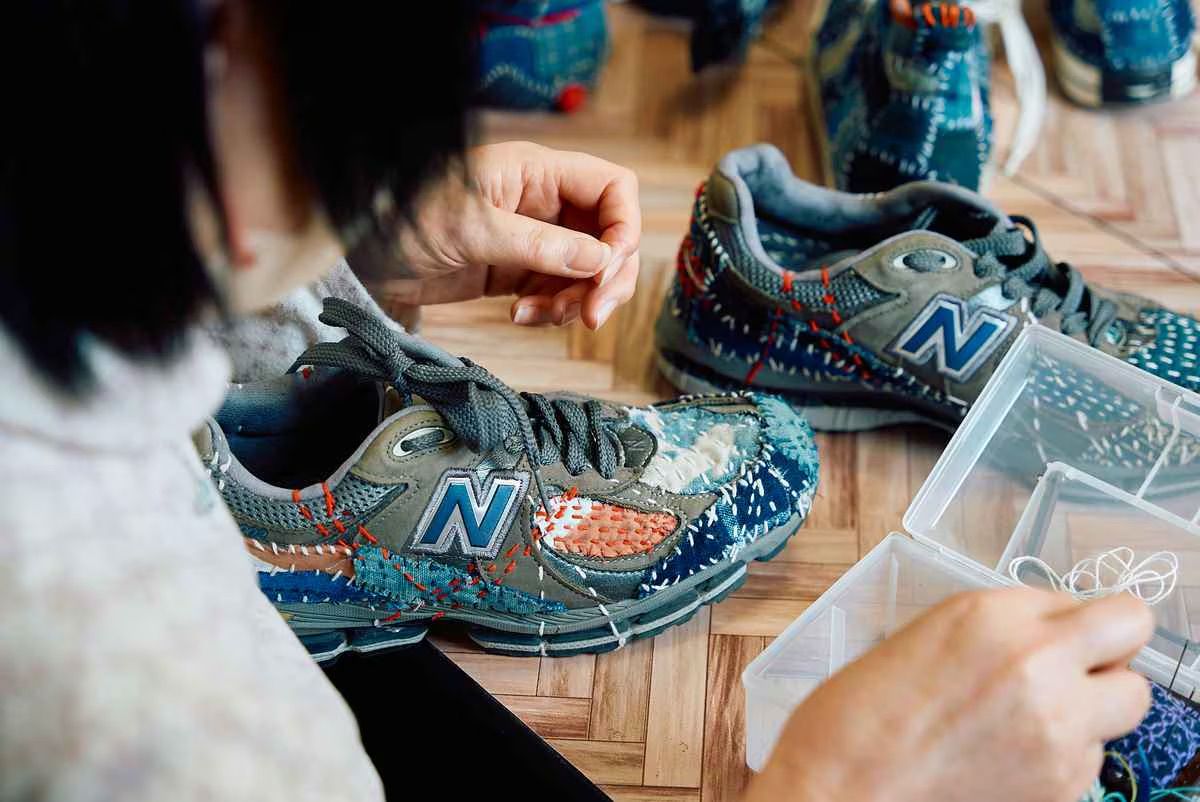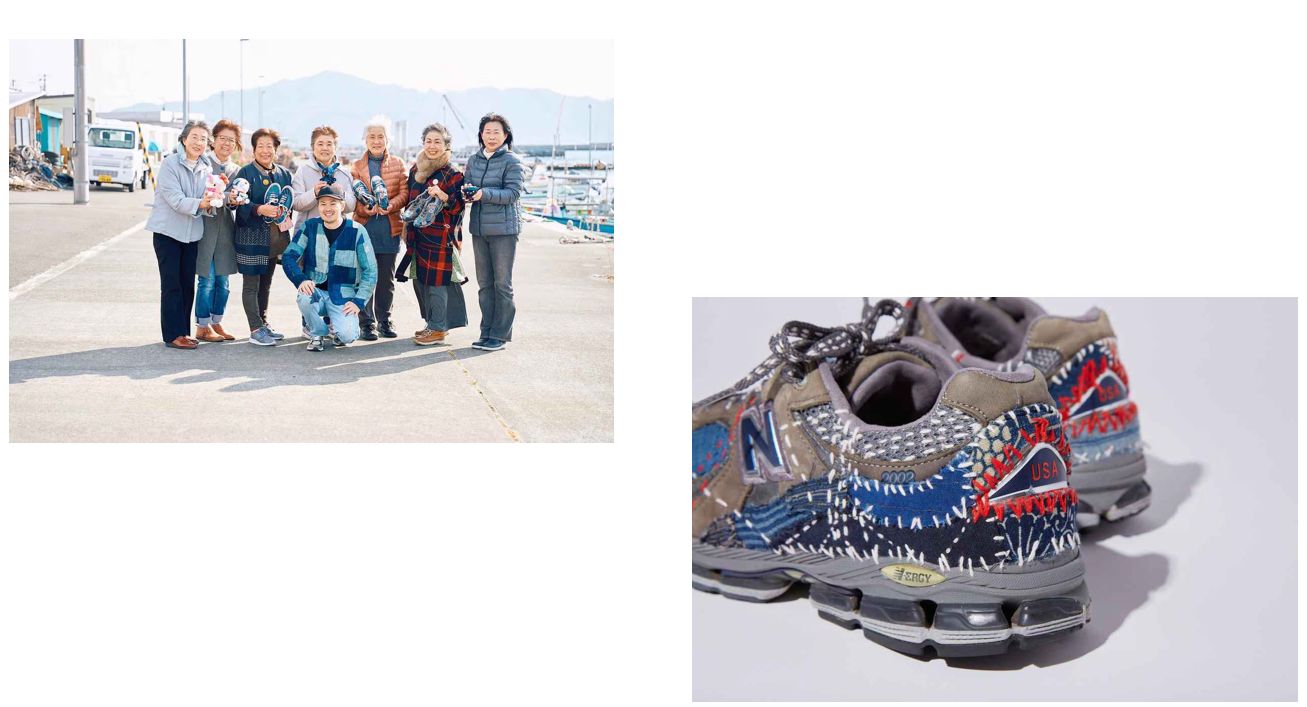Sashiko: Embroidery Craft That Made a Hollywood Star a Fan
日用の布に針と糸で幾何学模様を描く、昔からある実用的な繕いごと「刺し子」が今、世界でファッションとして注目されているそう。発信源は東日本大震災の被災地、岩手県大槌町。復興支援としてだけでなく、いずれはビジネスとして成立させ、地方の産業創出にもつなげていきたいといいます。SASHIKO GALSによる世界のSASHIKO、夢物語ではなさそうです。

1.Article
Directions: Read the following article aloud.
※本ページは出典ニュース記事を要約した英文です。
Leading this revival is the "Sashiko Gals" project from Otsuchi Town, Iwate Prefecture, an area affected by the Great East Japan Earthquake. Since its launch on March 11, 2024, the group has been praised for its handcrafted sashiko sneakers and other items.
The 15 project members carefully stitch indigo-dyed and vintage fabrics onto sneakers using zigzag and straight patterns, seamlessly crossing leather, rubber, and resin.
The members are women aged 40 to 80 who live in Otsuchi and were affected by the 2011 disaster. At their biannual order-taking event, they receive sneakers from customers and add sashiko designs with meticulous care.
For Kanako Sasaki, one of the members, her sashiko journey began in the summer of 2011 at a local community center. Introduced by volunteers, she started stitching dishcloths for ¥500 JPY (about $3 USD) per piece as a side job.
Before the disaster, she worked at a seafood processing plant that was damaged by the tsunami. "I felt I needed to work, and I also wanted to do something different even if the plant was rebuilt," she recalls.
Fellow member Kaori Kurosawa joined later and enjoys the orderly rhythm of creating the patterns. "Sashiko has become a part of my daily life," she says.
The driving force behind Sashiko Gals is Arata Fujiwara, the head of Tokyo-based apparel company MOONSHOT. After the earthquake, he commissioned sashiko work from the people of Otsuchi.
In 2016, he launched the apparel brand KUON, incorporating sashiko and indigo dyeing into its designs. When sashiko-embellished jackets debuted at New York Fashion Week, the embroidery technique was thrust into the global spotlight.
However, over time, orders for Otsuchi's sashiko work declined due to fewer disaster relief events and the impact of the COVID-19 pandemic.
"My brand's sashiko items sell well, and there's strong respect for the craft from overseas," Fujiwara reflects. "I realized that with the right approach, this could become a powerful business." This realization led to the launch of a project where customers could customize their fashion items with sashiko patterns.
In December 2024, Sashiko Gals received an unexpected message via their official Instagram account from a representative of Justin Timberlake — the American actor, singer, and former member of NSYNC. The message said Timberlake was a big fan of Sashiko Gals and requested a pair of sashiko sneakers as a birthday gift.
Fujiwara's vision is taking shape, with high-profile clients, including Hong Kong actors and Japanese rock musicians, seeking out sashiko pieces.
Collaborations have expanded beyond fashion, with sashiko work adorning chair seats and sofas for The Conran Shop. Now, major brands are reaching out to explore official partnerships, and preparations are underway.
Sashiko work is physically demanding. After two hours of stitching, hands become sore, and completing a single pair of sneakers can take over a month, often breaking four needles in the process. Yet, when the members gather to work, the atmosphere is always lively and filled with laughter.
This lively atmosphere inspired the project's name. "Watching them chat and laugh over snacks between stitching sessions made me think," Fujiwara recalls. "They were like gyaru [ギャル]!"
"Gyaru," derived from the English word "gal," refers to a Japanese fashion subculture popularized in the 1990s, characterized by bold fashion choices, heavy makeup, and a rebellious attitude.
With just a needle and thread, anyone can create sashiko anywhere, anytime. Moving beyond disaster relief, the group's ultimate goal is to establish sashiko as a sustainable business and contribute to regional revitalization. As the project members aim to make sashiko a globally recognized term, that vision seems increasingly within reach.
本教材は、一般社団法人ジャパンフォワード推進機構、株式会社産経デジタルより許諾を得て、産経ヒューマンラーニング株式会社が編集しています。
テキストの無断転載・無断使用を固く禁じます 。


